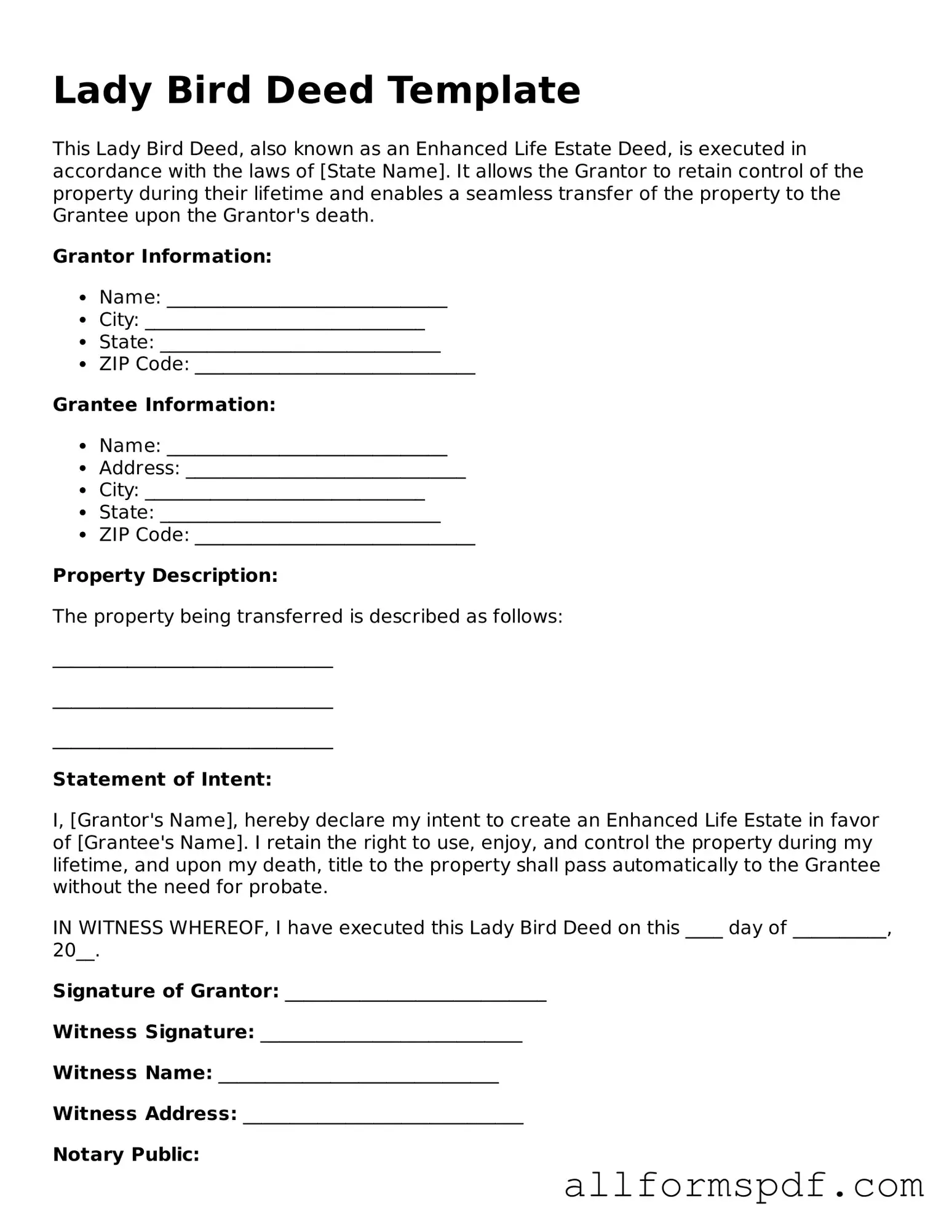Filling out a Lady Bird Deed form can be a straightforward process, but there are common mistakes that people often make. One significant error is failing to include all necessary parties. When completing the form, it is essential to list all individuals who will be involved in the transfer of property. Omitting a name can lead to complications later on.
Another frequent mistake is not providing accurate property descriptions. The deed must clearly identify the property being transferred. If the description is vague or incorrect, it can create confusion and potential legal issues. It is crucial to ensure that the property address and any legal descriptions are precise.
Some individuals overlook the importance of signing the deed properly. All required signatures must be present for the deed to be valid. If a signature is missing, the deed may not hold up in court. Additionally, witnesses may be required, depending on state laws, so confirming local requirements is vital.
People sometimes forget to have the deed notarized. A notarized deed adds an extra layer of authenticity and can help prevent disputes in the future. Without notarization, the deed may be challenged, which could lead to unnecessary legal complications.
Another common mistake is not understanding the implications of the Lady Bird Deed itself. This type of deed allows for certain benefits, such as avoiding probate. However, if individuals do not fully grasp these advantages, they may not utilize the deed effectively. Consulting with a professional can help clarify these points.
Some individuals may also neglect to inform their heirs about the deed. Open communication is essential to prevent misunderstandings or disputes among family members. When heirs are unaware of the deed's existence or its terms, it can lead to confusion and conflict after the property owner passes away.
Lastly, failing to keep the deed in a safe place can be a significant oversight. Once the deed is completed and recorded, it is important to store it securely. Losing the deed or failing to keep track of it can create unnecessary challenges for heirs in the future.
